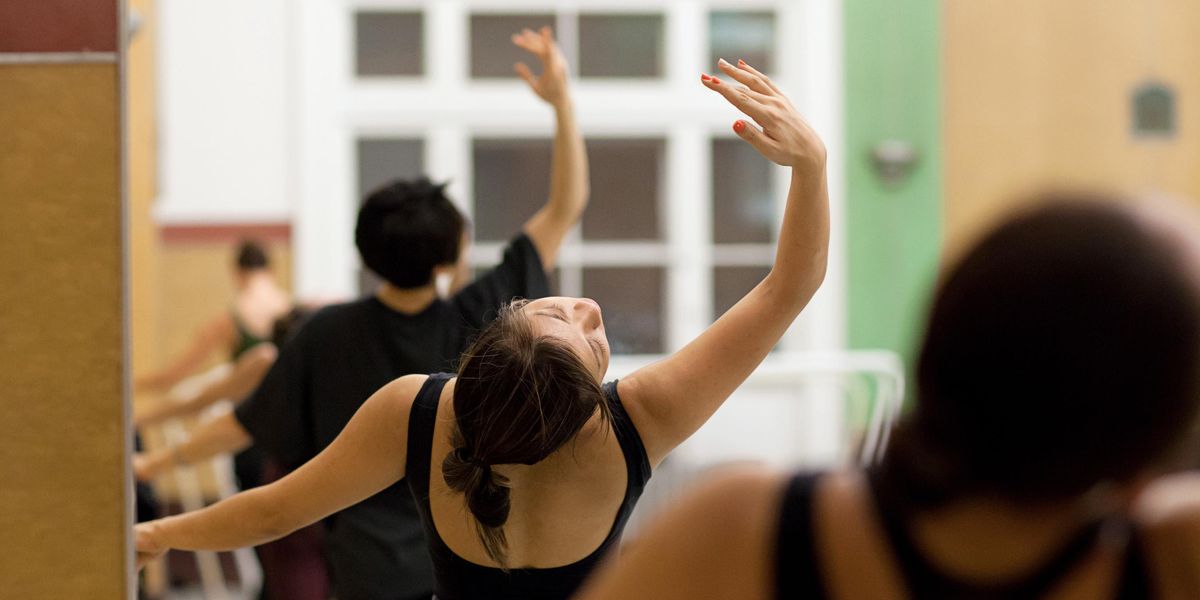How Adult Students Can Prep for a Safe Return to the Studio
After a year (or more) of virtual classes, it’s finally time to unplug and head back to the studio.
Exciting? Absolutely. A little scary? Definitely.
For Valerie Diamond, a 62-year-old dancer in San Francisco, California, the nervousness wasn’t something she could easily shake. Even though Marin Ballet, where she takes class, resumed its in-person classes for adults in early May, Diamond had reservations about taking the big leap back, especially after dancing in a 4-by-4–foot space for 15 months.
“I survived my first class back without injury,” she says, “but I felt like I had no stamina and jumping was really an effort.”
In the last few months, Diamond’s read a lot about how professionals and pre-professional students are getting back into shape, but she feels adult recreational dancers don’t have the same guidance on what to do—and what not to do—before stepping onto that marley floor in what seems like forever.
“No one is really watching out for you the way they would be if you were a professional dancer,” she says. “It really is scary. I want to do it in an intelligent way where I can make sure that I don’t get injured, particularly with the jumps.”
Haruka Tamura, an adult ballet teacher at Brookline Ballet in Massachusetts, says starting out slowly is key.

“You will be very excited and probably want to do a lot of things full-out, but your body might not be able to adjust. Just take it easy,” she advises.
Tamura says those first few weeks back are not the time to challenge yourself (such as by jumping into an advanced class when you’ve only taken the intermediate level). Everything will seem different—your stamina, the space and even the floors. It’s critical to give yourself time to adjust.
“Just do whatever you’re familiar with,” says Tamura. That familiarity will give your body the chance to keep up.
Consider Cross-Training
Kester Cotton, a physical therapist and the dance program coordinator at Spaulding Outpatient Center in Wellesley, Massachusetts, suggests dance-specific floor exercises to ease yourself back to a traditional class.
“Do floor alignment-type exercises where you work your turnout,” he says. “Lying on your back, lying on your side, and lying on your stomach.” He suggests trying these exercises demonstrated by Dutch National Ballet soloist YuanYuan Zhang, or these shown by Jurgita Dronina, lead principal at The National Ballet of Canada.
Cotton explains that the ability to balance well on one foot with your eyes first open and then closed and on an unstable surface like a stack of pillows are great for gauging your balance.
He suggests trying this series of exercises:
- Single-leg balance
(30 seconds to one minute, eyes open and eyes closed) - Single-leg calf raise
(25 to 30 reps) - Single-leg squat
(15 reps) - Single-leg hop
(15 reps)
“If any of these skills on one leg are really deficient, chances are you’re going to have a problem when you start jumping in the studio,” he says.
Increased cardiovascular exercise can also help. Cotton recommends heart-rate boosters such as elliptical training, spinning/cycling, using a rowing machine and, if you’re up for it, running. However, he warns, “running can be high impact and requires good technique to reap the cardio benefits without causing other musculoskeletal problems.”
If you’re new to cardio (or just getting back into it), start with 10 to 15 minutes, three times a week, for six weeks. After a couple of months, you can gradually increase the duration of workouts to 30 to 45 minutes, three to five times a week with a steady training goal for about 150 minutes per week.
 Haruka Tamura leads an adult class at Brookline Ballet. Shahrzad Sajadi, Courtesy Brookline Ballet
Haruka Tamura leads an adult class at Brookline Ballet. Shahrzad Sajadi, Courtesy Brookline BalletEasing Into Class
For students like Diamond, who haven’t done grand allégro (her favorite), pirouettes or piqué and chaîné turns in months, moving across the floor again can be daunting. She recalls one virtual class that ended, well, not like she would have liked: “We did try something with fouetté turns one day and I literally fell on the floor. And the teacher was like, ‘Okay, maybe we shouldn’t be doing that.'”
She’s considering just marking allégro exercises two days a week, and jumping on the other days. Teachers and therapists say do what feels right, but just go slowly.
Alonzo King LINES Dance Center’s Kathy Mata is still strictly teaching online classes (LINES plans to resume in-studio and hybrid classes in July). She’s working remotely with students on how to best prep for returning to the studio, especially when it comes to big movements across the floor.

“Grand allégro should be approached slowly,” she says, progressing from small jumps and single petit allégro. “Steps like temps levé in arabesque and balancé en tournant are a very good place to start, then working up to faille assemblé to learn to drive your body forward.”
As for what to steer clear of, Mata says movements like grand jeté and tour jeté should be avoided, since the landing has to be precise and well-placed.
Staying safe by starting slow is the best way to ensure an injury-free return to class. It’s also important to get out of your head a bit.
“Be kind to yourself as you’re easing back into the studio,” Cotton says. “It can be easy to be too analytical about it. Be grateful for being able to be back in the studio, and just go dance.”
Diamond is thrilled to do exactly that—and to see her ballet buddies again.
“Just the experience of dancing together is really important. And it’s what movement is all about.”





